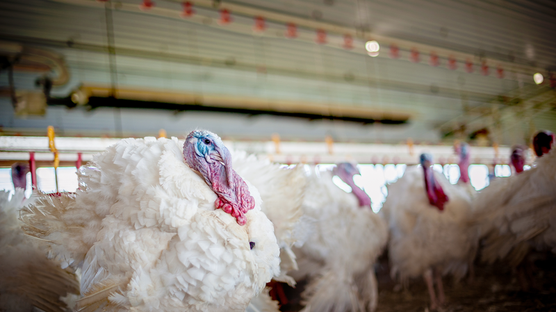
Published on March 20, 2023
New EMEA nutrition guidelines explained: calcium and phosphorus reduction
One of the main changes made to our nutritional guidelines for EMEA is reduced calcium and phosphorus levels. Learn more about how this change impacts digestive health, feed conversion ratio, and economic performance.
At the end of 2022, new nutrition guidelines were published to meet the needs of our medium and heavy strains for the European market. Updates were made to propose a reduction in feed costs without impacting the effect on performance. These guidelines were created by testing the adjusted levels in parent stock and commercial environments. One significant change in the guidelines is the reduction of calcium and phosphorus levels. This overview will summarize the benefits of calcium and phosphorus reduction and our method of reduction.
Advantages of reducing calcium and phosphorus levels
By reducing calcium and phosphorus, growers can expect cost savings and enhanced performance through improved litter quality, feed conversation ratio (FCR), and overall better digestive health.
Summary of effects
- Less calcium reduces the buffering effect to the gizzard and results in much better digestion of the feed and improved FCR.
- Phosphorus is a very expensive nutrient, reducing it lowers the overall cost of the feed.
- Results in better quality litter because less calcium and phosphorus are excreted by the kidneys (an excess of these two nutrients deteriorates the litter).
- Less calcium and phosphorus in the litter benefits the environment since there is reduced water pollution and eutrophication after spreading on crops.
| New guideline Medium Energy | Prestarter | Starter 1 | Grower 1 | Grower 2 | Finisher 1 | Finisher 2 |
|---|---|---|---|---|---|---|
| Week of age | 0-3 | 3-6 | 6-9 | 9-12 | 12-16 | 16-22 |
| Crude protein % | 27.5 | 26 | 23.5 | 21 | 18.3 | 16.5 |
| ME Kcal/Kg | 2850 | 2950 | 3050 | 3125 | 3200 | 3250 |
| Available lysine % | 1.62 | 1.49 | 1.39 | 1.22 | 0.99 | 0.82 |
| Total calcium (analytical, with phytase) % | 1.4 | 1.35 | 1.11 | 0.84 | 0.7 | 0.63 |
| Hybrid recommendations (previous) | 1.40 | 1.33 | 1.24 | 1.10 | 0.92 | 0.83 |
| Available phosphorus % | 0.72 | 0.69 | 0.55 | 0.42 | 0.35 | 0.31 |
| Hybrid recommendations (previous) | 0.75 | 0.71 | 0.62 | 0.55 | 0.46 | 0.4 |
| Reduction Ca % | 0 | +1.50% | 10 | 24 | 24 | 24 |
| Reduction P % | 4 | 3 | 11 | 24 | 24 | 23 |
Method and timing
It is very important to note that calcium reduction in the feed does not occur at start-up (0 to 6 weeks). These nutrients are crucial for construction of the skeleton to ensure optimal growth later. We can afford a higher decrease in the higher phases due to a decrease in Ca/P utilization in the bird at this stage. We made the decision for the new commercial guidelines to be very safe with calcium levels at start-up, but we slightly reduced phosphorus levels to have a more economical ration without impacting performance. Moreover, during maintenance, birds only need a low Ca/P intake due to efficient regulation mechanisms.
Concluding points
This decrease of Ca/P must be associated with a ration correctly enriched in vitamins, minerals, and amino acids, which is why it is important to follow the nutritional recommendations. Vitamin D3 must always be added in the right proportions because it has a predominant role in the metabolism of calcium and phosphorus. Moreover, the reduction of Ca/P is only optimal with the correct use of phytases to ensure a good absorption in the gut.
In summary, the new nutritional guidelines for EMEA customers were created for the purpose of better performance as well as improved economic results. Contact us if you would like to learn more about supporting your flock with the best nutritional recommendations.



